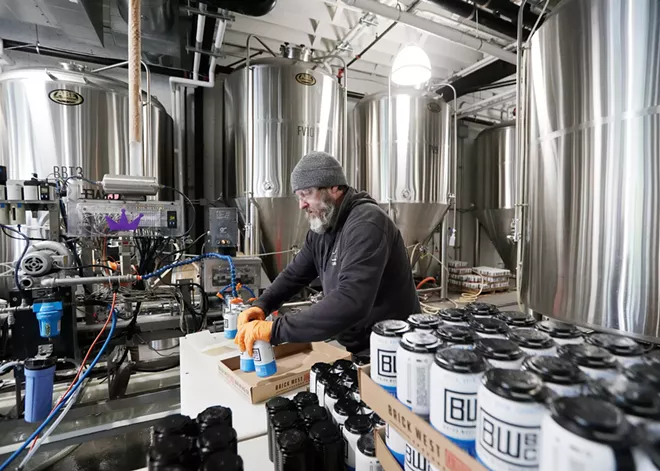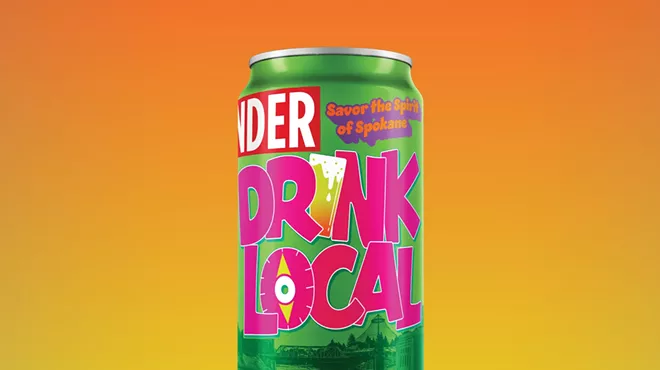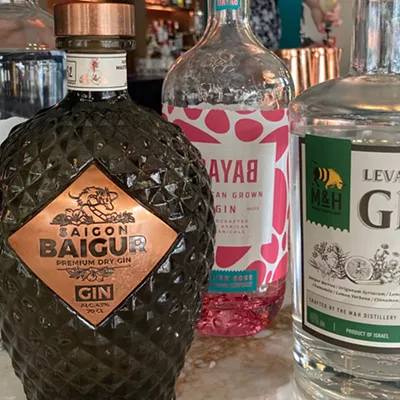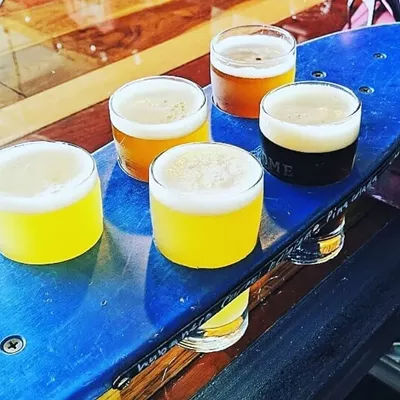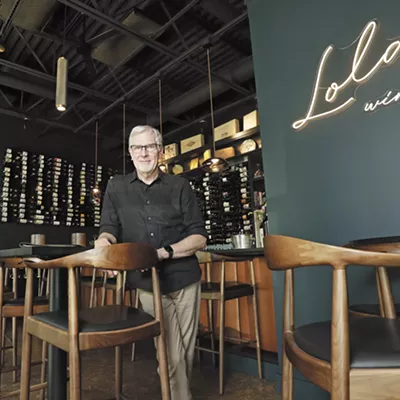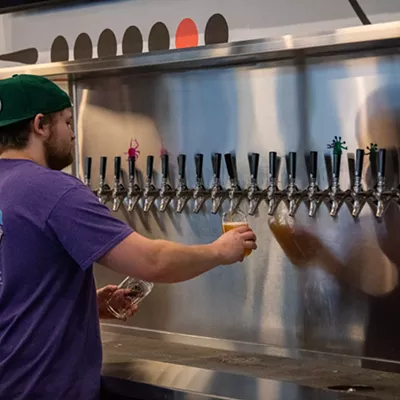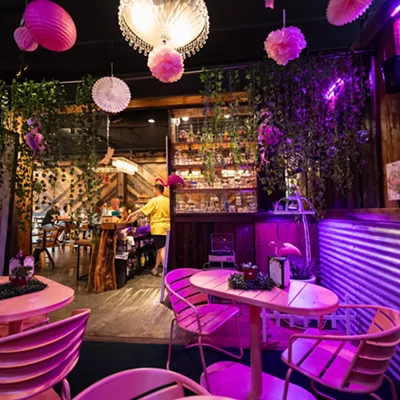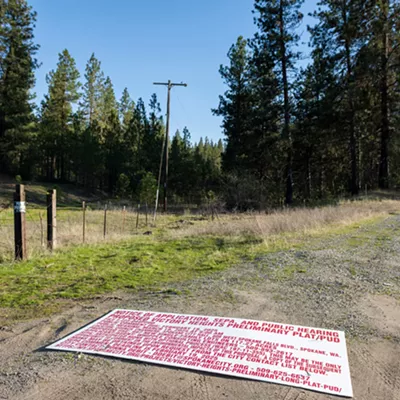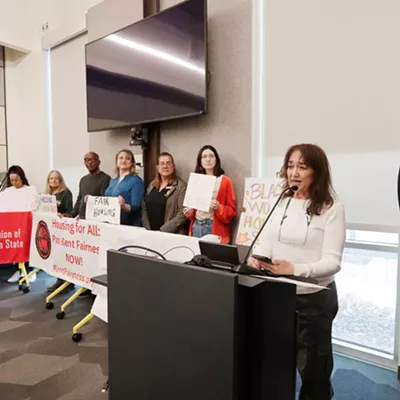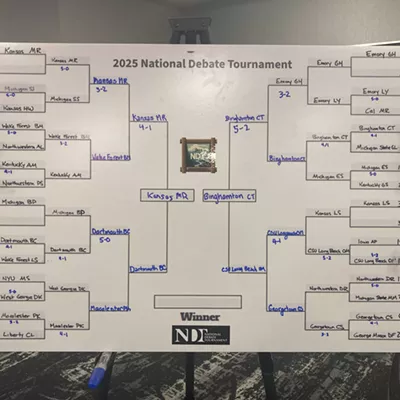Bvvvvmmmmm. Ti ka ti ka ti ka tik. Psshhht.
Monday, 9 am. It's canning day at Brick West Brewing Company. In the brewery behind the taproom, a loud hum echoes between huge holding tanks of beer. A Willy Wonka-esque machine with valves, cables, switches and jets vibrates in the middle of the floor. Today, almost a thousand empty cans will be funneled, spun, filled and sealed until they come out the other end, ready to hit the shelves.
It wasn't always this way. Just a few decades ago, craft brewers didn't package much of their beer, if any at all. If they really wanted to sell to grocery stores, they might have put their brews in glass bottles.
But today, after the pandemic forced more local breweries to distribute outside their taprooms, consumers showed a preference for aluminum, and canning became king. Many of the biggest breweries in the Spokane area have invested in their own equipment to control and grow these canned product lines. For breweries considering the next business step, the question isn't whether to can — rather, it's how to can with the highest quality, and what size of can they think is going to be the biggest hit.
"This is very much a science," says John Bryant, owner of No-Li Brewhouse. "It's a significant investment. You don't just can beer and call it good."
Brian Carpenter has been working with Brick West Brewing since before it opened its downtown taproom on West First Avenue in 2020. Canning beer was on the general manager's mind, but it was a goal for further down the line.
"Selling kegs and focusing on your taproom is where the margin really is," Carpenter says. "But when the pandemic happened, we had to shift. Not by choice."
Meanwhile, Chris Gass, owner of YaYa Brewing Co. in Spokane Valley, wanted his brewery to start canning as soon as possible. They got started six months after opening in 2019.
"Interestingly, the first time we actually ever canned beer was two weeks prior to the COVID shutdown in 2020," Gass says. "We didn't plan it. It just happened that we had a canning run scheduled from a mobile canner who came over from Portland."
Mobile canners allow breweries to learn how to can beer without buying all the expensive equipment upfront. During the pandemic, they were lifesavers for breweries with lots of product and nowhere to put it.
But after the pandemic, Carpenter says, those mobile canners from Portland and Seattle revamped their business models to stay closer to home and stopped coming east. Left without any outsource options, local brewers needed to decide how to package and distribute their beer on their own.
"Originally, we really wanted to be a 22-ounce bottle company," No-Li's Bryant says. "But over the years, the customer really wanted cans."
Putting beer in bottles, however, is "a little more cumbersome," Gass says, because getting a good seal on the cap is harder. Plus, light can get into a glass bottle and "skunk the beer," he points out.
All three brewers also mention that distributors don't like shipping glass because it's heavier and can break. For drinkers, cans are easier to recycle in most places, plus lighter and easier to carry.
"There's definitely a large cross section of people that are active and enjoy craft beer," Carpenter says. "Whether that's putting them in your backpack or on your boat, you're not worried about it breaking. It's a little more portable, especially if you're packing in and packing out."
These days, Lumberbeard Brewing's Lumber Funk is one of the only local brews you can find in a bottle. It looks cool, but that's not the real reason it gets a special vessel, the brewery's owner Bret Gordon says.
Lumber Funk gets its wackiness from a bacteria and a yeast strain that usually ruin beer. It's too risky to can it with a machine that also packages other beers. Gordon can't afford a separate machine, so he hand bottles Lumber Funk, sometimes 600 bottles at a time.
"It might not be worth the work for much longer," he says.
On canning day at Brick West, a vibrating plate sifts empty cans single-file into a funnel, which then spirals them onto a moving conveyor belt. Four by four, the cans are flushed with carbon dioxide and then immediately filled with a juicy IPA.
A technician uses a special key to adjust each filling valve. She has to coordinate between the tank's internal pressure and the seconds between flush and fill to get just the right amount of foam and avoid canned beer's downfall: dissolved oxygen. Too much dissolved oxygen means a beer can go bad within a week to 10 days.
On most canning days, Brick West fills 12-ounce cans. It's their most popular size, though 16-ounce cans are performing well across the industry.
"Sixteen-ounce cans have kind of become the de facto standard for craft beer," says Gass at YaYa. "I guess the expectation on the craft side is that you're getting a pint at the brewery or in the tasting room, so 16 ounces is expected in the can."
Gass says that grocery store shelves are set at the right height for 16-ounce cans, which makes it even easier to sell pints to distributors. Though not everyone agrees.
"From what I can tell, the 16-ounce cans really never stuck because it's too close to a 12-ounce," Bryant at No-Li says.
No-Li is instead betting on bigger, bolder 19.2-ounce cans, which they hope will stand out and attract shoppers.
Canning machines, meanwhile, can usually accommodate only two can sizes. When brewers buy their own machines for tens of thousands of dollars, they have to pick between 12-, 16-, 19.2- and 22-ounce options, then cross their fingers and hope for the best.
"Everything kind of swings in and out of trends, right?" Carpenter says. "I thought at one point I would definitely see some bottles swing back, but they never really did. Instead, it's really just expanding on the can selection." ♦

